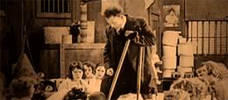Reviews
Emanuelle e gli ultimi cannibali / Trap Them and Kill Them
Joe D’Amato
Italy, 1977
Credits
Review by David Carter
Posted on 18 October 2007
Source Region 2 DVD
Related articles
Reviews Cannibal Holocaust
Reviews Cannibal Ferox
Reviews Chew on This
Categories 31 Days of Horror
Most of the films in the influential but short-lived “cannibal boom” are not nihilistic examinations of the hidden barbarism in civilized society. These films may not have received the same derision or praise, but they are no less valuable in analysis of the genre. Certainly they are no less valid as horror films, either, often being more in line with traditional horror than their more salacious brethren.
Exploitation king Joe D’Amato could always be counted on for both a good time and the occasional thought provoking moment, as evidenced by his collaborations with Laura Gemser in the Black Emanuelle series. The pair would make a quartet of films in 1977 and 1978 that often pitted the intellectually and sexually liberated Emanuelle against a myriad of subtly patriarchal foes lurking in the shadows of modern society. This series of films - Emanuelle in America, Emanuelle Versus Violence to Women, Emanuelle and the Last Cannibals, and Emanuelle and the White Slave Trade - saw Emanuelle square off with the specters of modern urban legends: the snuff film industry, the white slave trade (twice), and, as you might have guessed by now, cannibals. Emanuelle and the Last Cannibals is the Black Emanuelle series’ only entry that fits neatly into the horror genre and, like the other films we’ve discussed, pushes the boundaries of horror cinema.
Investigative reporter Emanuelle is working undercover in a mental hospital, armed with a camera concealed in a doll. She finds nothing newsworthy until a patient attacks a nurse and bites her breast almost completely off. Emanuelle learns that the patient was found on the banks of a river in Amazonia and the doctors have yet to find a way to communicate with her. Using her sexual charms to calm the feral girl, Emanuelle discovers an odd tattoo on her pelvis that resembles the markings of a cannibal tribe long believed to be extinct. Her editor immediately sees the potential profit in a front-page story about cannibals and agrees to fund an expedition for Emanuelle and Professor Mark Lester. Lester confirms her theory about the markings but agrees with the conventional belief that the tribe no longer exists. After a bit of physical persuasion, Emanuelle convinces him to accompany her to the Amazon jungle to get to the bottom of the mystery surrounding the cannibal girl.
Upon arriving in the jungle they meet up with Lester’s old friend Wilkes and his daughter Isabelle, both of whom reiterate Lester’s assertion that cannibals are simply the stuff of legends (not unlike fellow New York academic Gloria Davis from Cannibal Ferox. Emanuelle still believes there is a story for her somewhere out there, so she, Lester, and two guides accompany Isabelle as she takes Sister Angela to the heart of the jungle. After an uneventful trip down river, the group runs into harried big game hunter McKenzie, his wife Maggie, and their guide Salvadore. McKenzie informs them that the mission is no more; cannibals have slaughtered all the priests, nuns, and children. Faced now with the horrifying reality that the cannibal myths may be true, Emanuelle begins to have second thoughts about how far she’s willing to go to get the story. Their guides are soon picked off by a series of booby traps and the group begins to realize that they are in for a life or death struggle against the (still unseen) cannibals. When the cannibals finally reveal themselves, they show no mercy to those who have trespassed into their home.
Coming the same year as Deodato’s Jungle Holocaust, Emanuelle and the Last Cannibals can be seen as being both an innovator of the cannibal genre and a prime example of it, introducing many of the tropes of the genre—the assertion of truth, the untrustworthy companions, and others. Rather than juxtaposing the cannibal society against the civilized society to highlight the wickedness of the latter, D’Amato chooses to present the cannibals as true villains: wholly evil and in no way analogous to conventional society. D’Amato’s cannibals are as inhuman as the missing documentary film crew in Cannibal Holocaust. They exist solely to bring harm to others, which they do in excruciatingly gory and somewhat symbolic manners. Each member of the party attacked by the cannibals receives a fate that is considerably ironic given their previous actions: the impotent McKenzie, his nymphomaniac wife, the chaste Sister Angela, and the curious Isabelle are all subjected to a type of quasi-sexual violence that seems custom tailored to them.
Since this is a D’Amato/Gemser collaboration, the aforementioned sexuality in the film is of note. This, along with the rest of the Black Emanuelle series, is ostensibly a softcore erotic film. D’Amato chooses to show both his mastery of and contempt for the genre in Emanuelle and the Last Cannibals by ultimately turning the film’s sexuality against itself. Emmanuelle’s carefree bed hopping is later darkly parodied by the cannibals’ almost spiteful lust. As noted above, the characters are treated to a violence draped in sexual nuances. A gentle kiss on the breast is juxtaposed against the violent biting and tearing of a nipple more than once in the film, and D’Amato films the gore in loving close-ups clearly intended to be sinister inversions of traditional erotic filmmaking.
Emanuelle and the Last Cannibals is at first glance an exploitive mix of sex and violence, but there is additionally a strong element of psychological horror. The pessimistic D’Amato presents a world where your worst fears are justified, despite the often overwhelming evidence that what you are afraid of is merely make-believe. The unifying theme of the four ‘77—‘78 Black Emanuelle films is this idea that these “monsters in the closet” of modern society are both very real and very dangerous. We see this here in a manner in which the “cannibal myth” is dismissed by Emanuelle, the newspaper’s research staff, Professor Lester, and finally the inhabitants of the jungle itself. The notion that they are faced with any tangible threat of cannibals is presented as illogical—this idea, of the illogical taking form, has been an integral part of horror from the writings of Poe and Lovecraft to cinematic works of Romero and Argento. Emanuelle and the Last Cannibals sustains this concept, presenting a world existing unnoticed within our own, waiting silently for any unwitting passersby to fall into its clutches.
More 31 Days of Horror
-

Alien
1979 -

The Elephant Man
1980 -

My Bloody Valentine
1981 -

Who Can Kill a Child?
1976 -

Cannibal Holocaust
1980 -

Let Sleeping Corpses Lie
1974 -

John Carpenter’s Vampires
1998 -

Jaws 2
1978 -

A Warning to the Curious
1972 -

Wolf
1994 -

The Survivor
1981 -

Cannibal Ferox
1981 -

The Nights of Terror
1981 -

Death Becomes Her
1992 -

Alice, Sweet Alice
1976 -

Body Double
1984 -

Invocation of My Demon Brother
1969 -

Phantasm II
1988 -

Emanuelle and the Last Cannibals
1977 -

The Wicker Man
1973 -

Maniac Cop
1988 -

The Legend of the 7 Golden Vampires
1974 -

The Penalty
1920 -

Boxing Helena
1993 -

Chew on This
2005 -

Night of the Creeps
1986 -

Night of the Lepus
1972 -

Near Dark
1987 -

Army of Darkness
1992 -

The Brood
1979 -

The Lift
1983 -

Amsterdamned
1988 -

Silent Witness
1999 -

The Shaft
2001
We don’t do comments anymore, but you may contact us here or find us on Twitter or Facebook.



